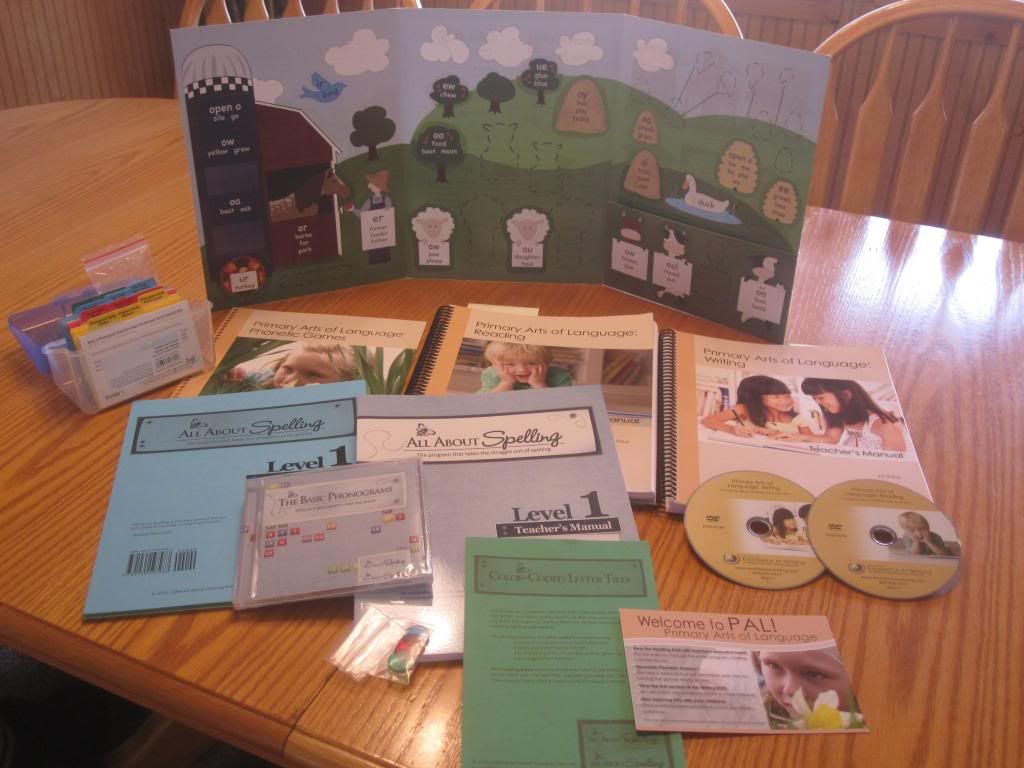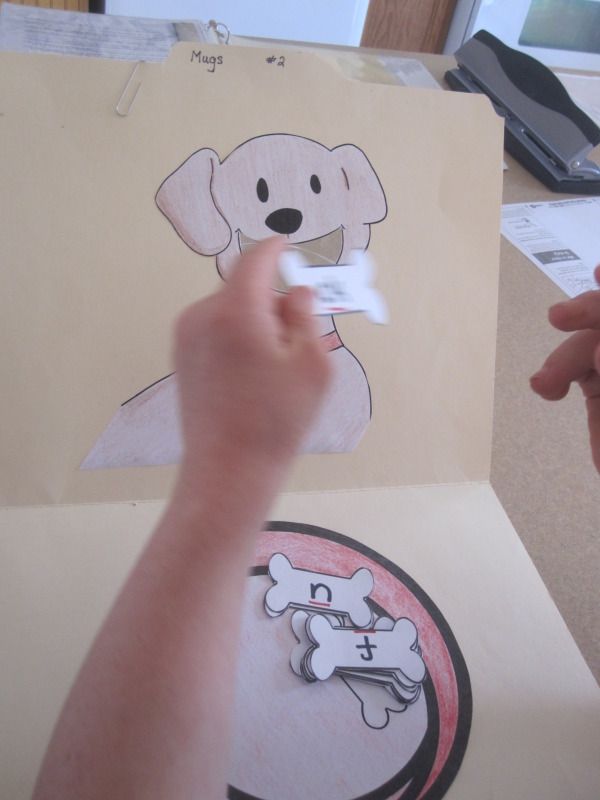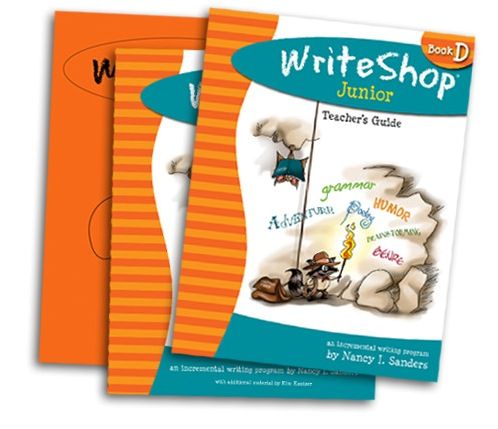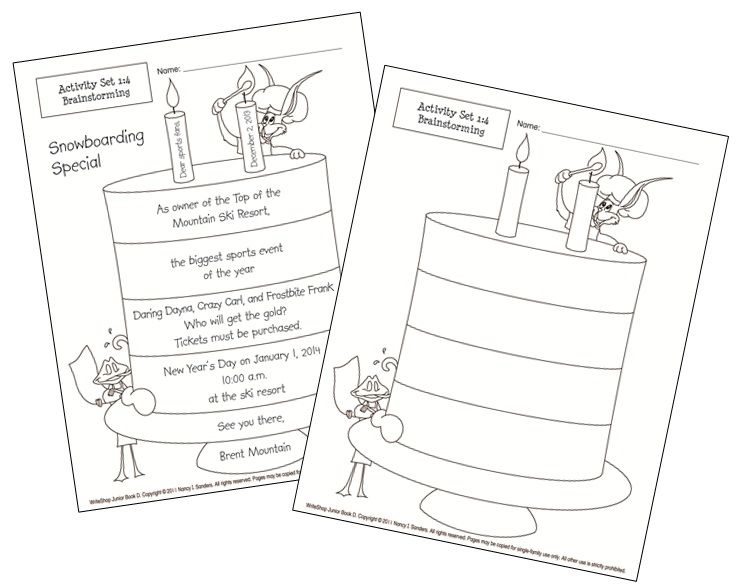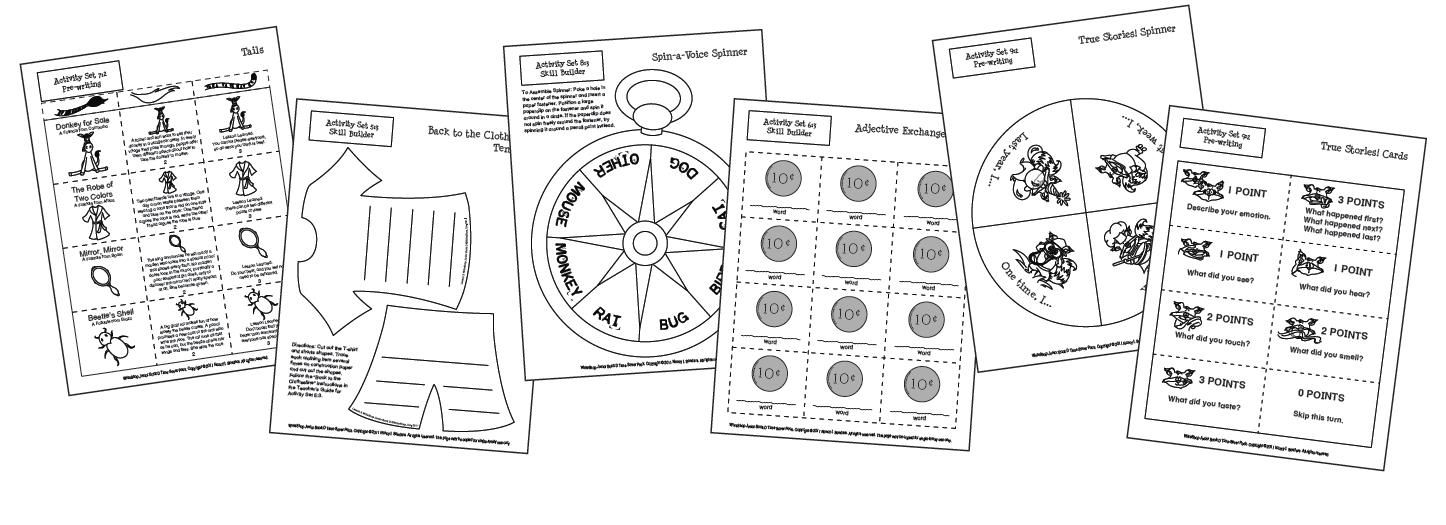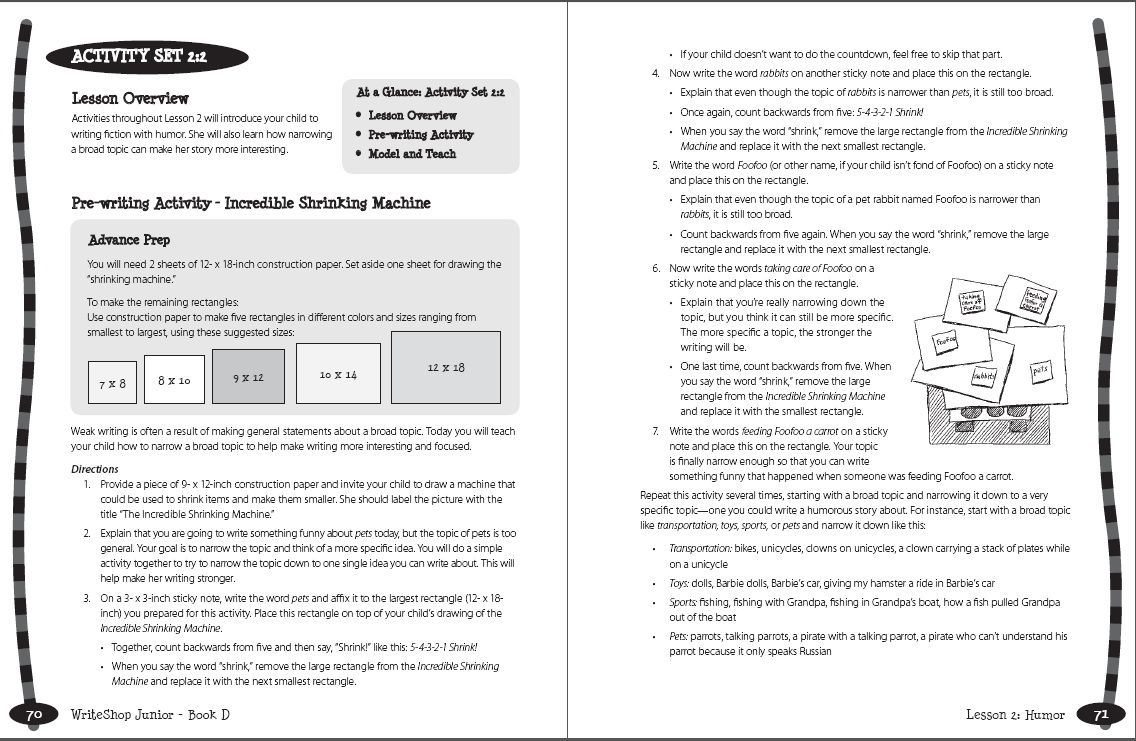Primary Arts of Language: Writing Teacher’s Manual
Primary Arts of Language: Writing DVD-ROM
All About Spelling Basic Interactive Kit
All About Spelling Level 1 (Teacher’s Manual and One Student Material Packet) By Marie Rippel
We also received the following MP3 Audios:
The Four Language Arts , Nurturing Competent Communicators, and
Dictation, Narration, and Public Speaking by Andrew Pudewa
Poetry as an Integrator and Intro to the Blended Sound Sight Program by Anna Ingham
Reading Comprehension by Adam Andrews
Units 1 and 2 in the K–2 Classroom and Unit 3 in the K–2 Classroom MP3 Audio by Shirley George
Preparing the K-2 Writing Environment MP3 Audio by Richelle Palmer
When the package arrived it seemed like it could be a bit overwhelming. However, I popped in the Instructional Video (included on the DVD-ROM) and author Jill Pike does a great job of explaining how to get started. I found it very easy to just jump right in and get started. PAL arrived on Saturday and we started using it first thing Monday morning. Besides watching the video, I also started listening to the incredible audios that were included. These are inspiring for all homeschoolers and I highly recommend them.
When using the complete PAL program you have everything you need to teach reading, writing and spelling. While the different parts of the program can be used separately, they are meant to be used in conjunction with each other.
Because there is just so much to cover, I recommend you watch this free webinar for an overview and you can watch this 3 minute video with Jill Pike and Andrew Pudewa that explains where to begin:
Click on this link if the embedded video doesn't appear: http://www.youtube.com/watch?v=HmR5K-ozQZ8&feature=autoplay&list=UUHuYYtnncZw7SCOQb-lY0pA&playnext=1
I thought the easiest way to share PAL with you would be to show you what a typical day of PAL looks like for us. We don't always follow the same order, but this is a rough idea of how the day goes.
I begin by opening the reading and writing guides and setting them next to each other. I have an island so I stand on one side of the island while kids are on the other side. I have a white board on my refrigerator.
I usually begin by writing in our classroom journal (a composition notebook). The kids can tell me what they want me to write and I add things that I think are important.
Next, we work on our writing lesson. In the early lessons, every lower case letter is taught with a letter story. I can't tell you how wonderful these stories are in helping the kids to remember the letters. Here is a sample of pictures of some of the stories. There are cards that can be printed for each letter.
 |
| Each letter has its own name and story. For example, d is the doggy letter. You start by making his head and then his tail goes straight up and you go back down again. |
Printable pdf worksheets are included on the Writing DVD-ROM. Teachers are encouraged to have students practice on a white board before moving to paper. (My kids love this.) At first, the students write in blocks without any lines. Later, they move to writing on lines using a house to guide the height of the letters with a main floor, and attic and a basement. (You can see what I mean in the picture above with the Teacher Guides.) Once students learn all of the lowercase letters they move on to the capitals, then finally numbers.
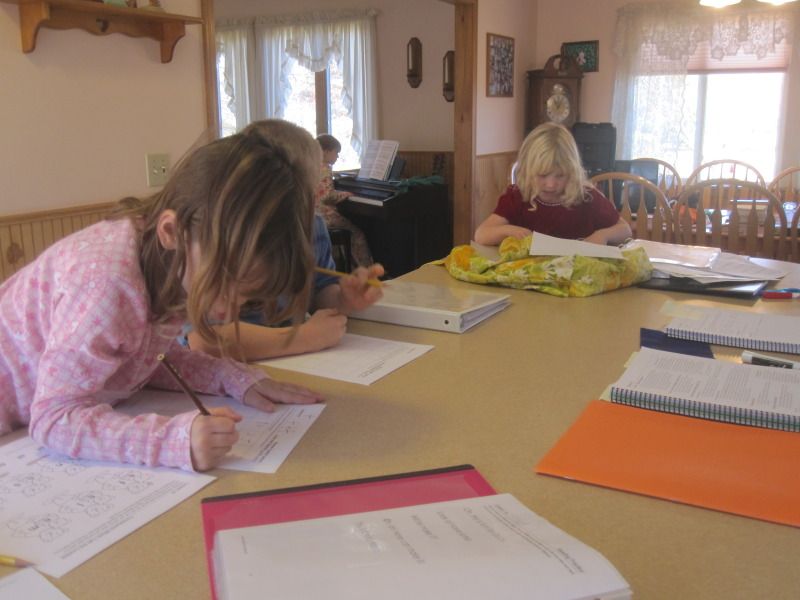 |
| 3 of my children are using PAL. Ellie (almost 5), Jenna (7) and Connor (11 with Down syndrome) |
We then do our Poetry Lesson. (Sometimes we start with poetry.) I read the poem (or have the kids recite it once they've learned it) and then there are notes in the teacher's book as to what to do with the poem that day. You might have things to underline or look for, you might draw a picture of it or act it out. I've never been a big fan of poetry, but PAL has really changed my mind on this. For the first time ever, I am enjoying poetry and love the way PAL uses the poetry to integrate what we are learning.
A major component of PAL are the file folder games. The Phonetic Games, among other things, really set PAL apart from any other reading program. It took me about a week to completely assemble all of the games. This included taking the book apart, copying it and storing the originals in a 3-ring binder. I could have saved time by just cutting the games out as we needed them but I preferred to have them all set ahead of time (and to copy them so if anything happened to one I could make another one.)
I have the games stored in a file folder box that I purchased for this purpose. I also keep our classroom journal and some supplies in the box.
There are 40 games that teach everything from phonograms to vowels/consonants, beginning and ending sounds, matching, compound words etc. The kids like to play these games and enjoy learning this way.
In this game, Mugs the dog is fed bones with phonograms on them. As the child says the sound they feed the bone to Mugs (you can place a box or bowl behind Mugs to catch the bones and prop up the folder.)
Another game the kids like is feeding words to the "monster". This is not a file folder game but we often play this during game time. Connor especially likes this game.
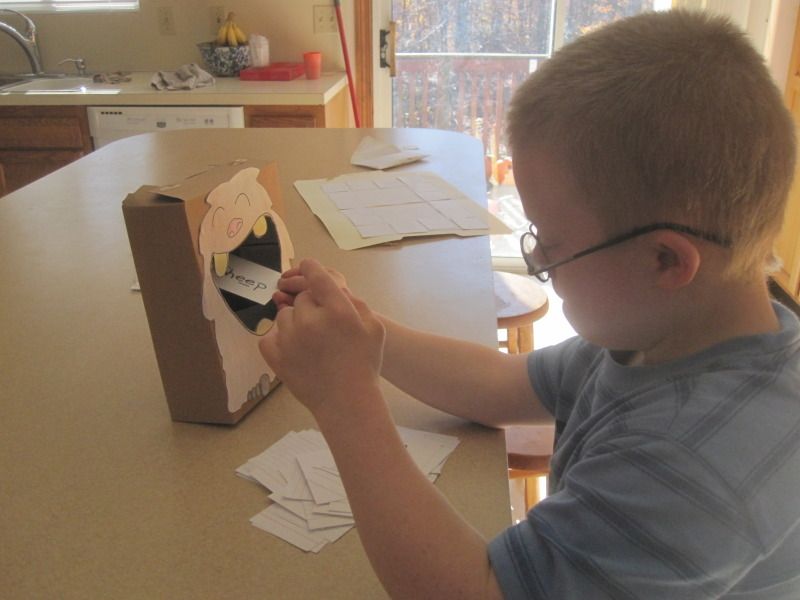 |
Below is a photo of several of the games. In the back, is a beginning consonant game where the child places the correct letter on the picture. The game on the left is a vowel and consonant game. The child drives the cars into the proper parking lot (vowel-consonant- or VIP parking space for "y"). To the right is a game where the child places the proper color word on the color. In the front is a charades game where the child chooses a card to read then acts it out.
 |
| Add caption |
In the beginning lessons, the teacher's guide tells you which games to play. Eventually, the kids are to learn to play games on their own (or with you or a sibling) for 30 minutes per day.
Another fun component of PAL is the Phonetic Farm shown here:
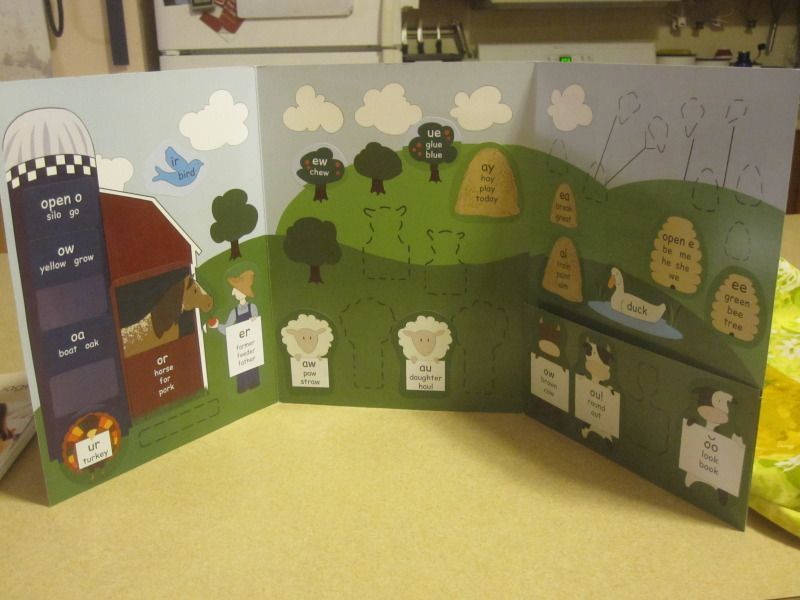 |
| The inside of the tri-fold folder |
 |
| The backside |
As you learn new phonograms, students place stickers in the farm to help them remember rules for what sounds the letters make. It's really cute yet effective. The back side (which also shows the cover) has a few jingles to help children remember which words use er, ir and ur, as well as rules for the sounds of y and much more.
Besides poetry, we also use story telling. In the early lessons, stories are provided in the teacher book. After reading the story, you begin to teach the children about setting, plot, characters etc by asking questions provided in the book.
The remainder of the time is spent on reading worksheets. For most lessons there are 2 worksheets. One usually involves coloring then cutting and pasting words or sentence strips from the bottom of the page to the appropriate box under each picture. The second sheet is a reading sheet for the kids to practice reading the words they have learned. This is all in preparation for their first reader. We are just getting to the first reader (we finished lesson 21 this week) and I am just so excited for my 2 older children using this program to get the reader. It's a pdf reader that is also a coloring book that you print out for the child.
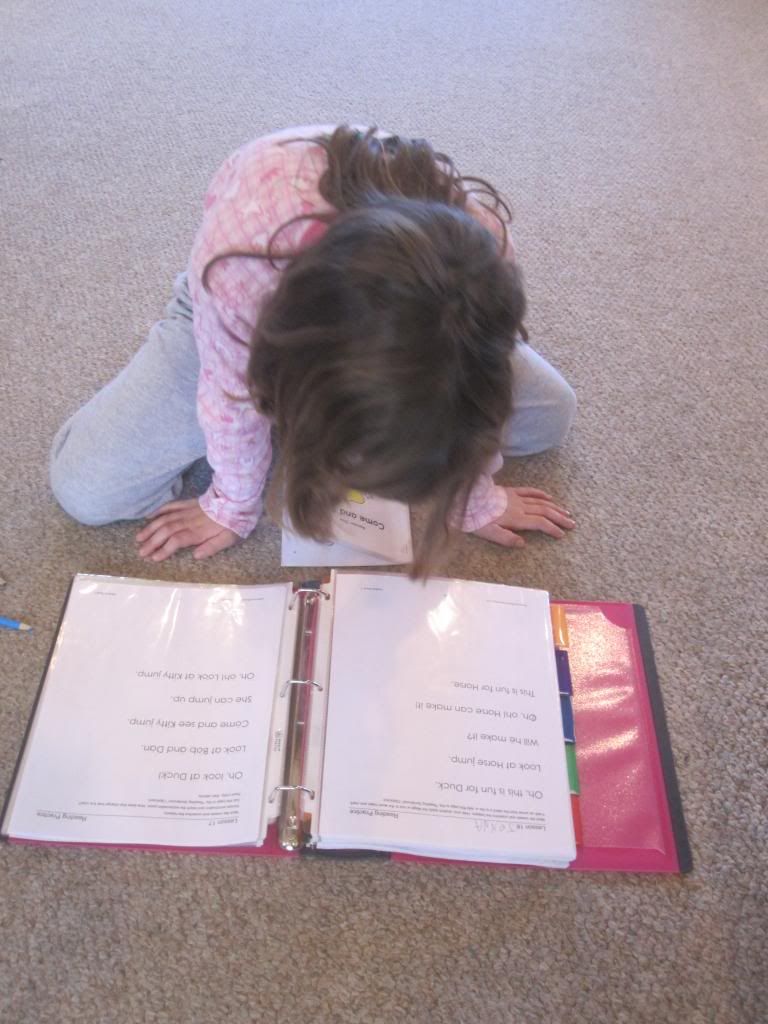 |
| Jenna with her notebook |
As they work through the lessons they build a notebook with 5 parts to it: Poetry, Posters (these are coloring pages that teach certain rules such as punctuation and phonetic rules), Homophone Clothesline (a place to record homophones as they are learned/found), Phonetic Farm Word Book (printable pages that mirror the Phonetic Farm), and Reading Practice worksheets. We also choose to save all of the work pages and handwriting sheets as well. We keep everything in sheet protectors. The kids love their notebooks and even took them on a recent trip to read in the car! (with no prompting from me)
As I've been working on this review, I keep wanting to say that "this is my favorite part" about everything. I just love all of the different components and how they work together. It is a joy to use PAL and I am thankful to have had this opportunity to review it and use it. I really feel that I've barely scratched the surface with all that is included with this program. It is amazing and yet so simple to use.
The final component we received is All About Spelling. This doesn't really begin until after you reach lesson 20 and so I've only just started this with my first grader. Connor and Ellie aren't quite ready for it. I can't give an in depth opinion of it since we are only just beginning but I like what I see. Other crew members have more advanced students that did use more of the spelling program so if you are interested in more details please read the other reviews.
All About Spelling starts by teaching phonograms to the child. There are phonogram flash cards, a phonogram CD-ROM so you can hear exactly how each phonogram is to be pronounced, a teacher's manual, and a student pack. The student pack contains a phonogram chart, tokens, phonogram cards, sound cards, key cards, word cards, a progress chart and a completion certificate. Also, magnetized letter tiles that you use on a white board. This is a step by step multi-sensory program. I am truly looking forward to digging deeper with All About Spelling.
The Basic Phonogram CD-ROM allows you or your student to click on a phonogram to hear the sound or sounds that it makes. This is fun for your student and helpful for anyone not familiar with the phonogram sounds.
Before I finish, I want to point out that we have only used part 1 of PAL:Writing and Reading. The Writing Program has 3 part and the Reading program contains 4 parts as follows:
Reading:
Stage 1: Foundations (as discussed throughout the review)
Stage 2: Activity Time (Students play the games and being with their readers.)
Stage 3: Discovery (Once the student has mastered the phonetic rules by playing the games they move on to discovery cards (included). There are 30 pages of cardstock, each containing ten Discovery Words
Stage 4: The Library (The student moves to reading real books. A book list is provided.)
Writing:
Part I: Printing and Story Summaries
Part II: Copy Work and Style with All About Spelling
Part III: Composition with Style
I hope it is clear how much I love PAL. If you have any questions please feel free to ask. I do want to mention that I was already familiar with phonograms as I have taught phonics in the past. I felt like this was a "no-prep" type of course, but if you have no experience with phonograms you might need to spend a little time familiarizing yourself with them, but I still think minimal prep time is needed.
The price of this is a little high, but worth every penny. Connor (my son with Down syndrome) has really taken off reading with this. Jenna (my first grader) is making great progress in her reading. The pace was a little fast for my 4 year old, but her writing is coming along wonderfully and she is learning so much. I love having the three of them working together. We will continue using this for the rest of the year.
Purchase Primary Arts of Language as individual components or get the best deal on complete packages. Primary Arts of Language: Reading for $69 and Primary Arts of Language: Writing is $89 (includes All About Spelling). Samples of each program are available by scrolling down on either of those 2 links.
Visit the Institute for Excellence in Writing for a variety of Language Arts curriculum for all ages. I am so happy to have found IEW!
See what others are saying about Primary Arts of Language on The Schoolhouse Review Crew blog.

disclaimer: I received Primary Arts of Language in exchange for an honest review.
The Basic Phonogram CD-ROM allows you or your student to click on a phonogram to hear the sound or sounds that it makes. This is fun for your student and helpful for anyone not familiar with the phonogram sounds.
Before I finish, I want to point out that we have only used part 1 of PAL:Writing and Reading. The Writing Program has 3 part and the Reading program contains 4 parts as follows:
Reading:
Stage 1: Foundations (as discussed throughout the review)
Stage 2: Activity Time (Students play the games and being with their readers.)
Stage 3: Discovery (Once the student has mastered the phonetic rules by playing the games they move on to discovery cards (included). There are 30 pages of cardstock, each containing ten Discovery Words
Stage 4: The Library (The student moves to reading real books. A book list is provided.)
Writing:
Part I: Printing and Story Summaries
Part II: Copy Work and Style with All About Spelling
Part III: Composition with Style
I hope it is clear how much I love PAL. If you have any questions please feel free to ask. I do want to mention that I was already familiar with phonograms as I have taught phonics in the past. I felt like this was a "no-prep" type of course, but if you have no experience with phonograms you might need to spend a little time familiarizing yourself with them, but I still think minimal prep time is needed.
The price of this is a little high, but worth every penny. Connor (my son with Down syndrome) has really taken off reading with this. Jenna (my first grader) is making great progress in her reading. The pace was a little fast for my 4 year old, but her writing is coming along wonderfully and she is learning so much. I love having the three of them working together. We will continue using this for the rest of the year.
Purchase Primary Arts of Language as individual components or get the best deal on complete packages. Primary Arts of Language: Reading for $69 and Primary Arts of Language: Writing is $89 (includes All About Spelling). Samples of each program are available by scrolling down on either of those 2 links.
Visit the Institute for Excellence in Writing for a variety of Language Arts curriculum for all ages. I am so happy to have found IEW!
See what others are saying about Primary Arts of Language on The Schoolhouse Review Crew blog.

disclaimer: I received Primary Arts of Language in exchange for an honest review.

